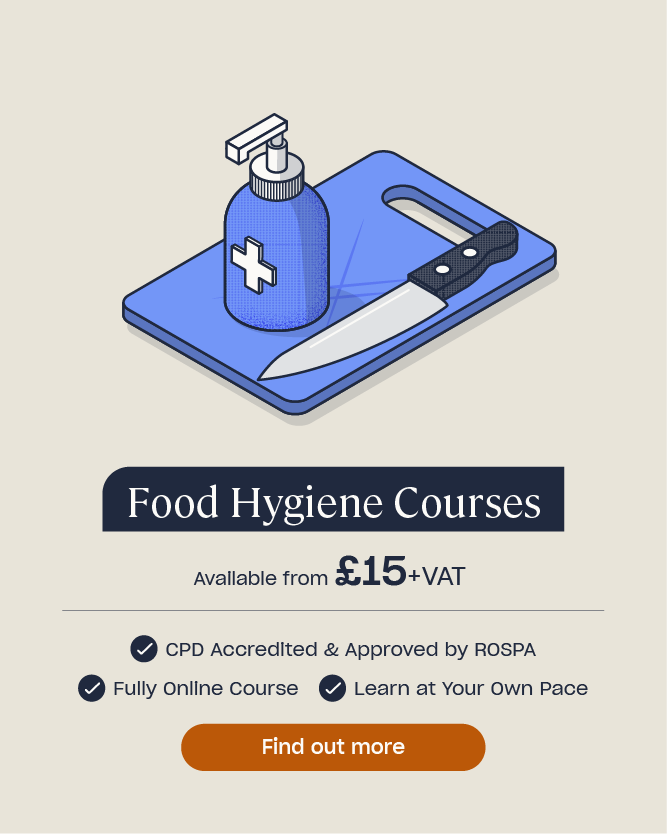Personal Hygiene Tips for Food Service Staff
Are you a waiter or server? If you are, then you’re probably well aware of the fear surrounding the word ‘contamination’. Contamination of food from poor hygiene practices is likely to be a sack-able offence in your food business, so it’s essential that you do everything you can to prevent it.
Need a Course?
Our Food Hygiene Training is designed to ensure a comprehensive knowledge of all food safety and hygiene procedures. The courses provide learners with up-to-date food hygiene information using a range of written text, interactive exercises and video content to ensure learners thoroughly comprehend their food safety responsibilities.
Personal hygiene is one of the first places to start – but do you know what you should be doing?
Personal Hygiene & Food Service
Food hygiene law states that all food handlers must have a high standard of personal cleanliness, wear protective clothing and follow food hygiene rules. Being a law, these things are not optional – you must comply with each of them. Below are the steps you should take to ensure your compliance with personal hygiene standards:
1. Always Wash Your Hands
The moments when you should wash your hands are pretty much endless! When you get to work, before handling food, after handling food, after blowing your nose, after going to the toilet, after touching your hair, before your lunch break, after your lunch break….
The general rule is the more frequently the better, and definitely before handling food of any kind. Washing your hands also means more than a quick rinse under the tap: make sure you use hot water and a decent amount of soap and thoroughly rub all parts of your hands, fingers and nails. Paper towels are recommended for drying because they can be disposed of and so bacteria can’t be spread.

2. Wear Protective Clothing
If protective clothing – like gloves, a hat, a hairnet or an overall – is provided to you, then it must be clean and you must wear it. This is a legal requirement.
Protective clothing helps to protect the food from any bacteria you are carrying on your hands and your clothes, as well as from any loose hairs or bits of skin.
3. Avoid Nail Polish, Perfume & Aftershave
Whilst they might make you feel more attractive, glam or put-together, wearing nail varnish, perfume or aftershave to serve food is both impractical and not very safe. Nail polish (or fake nails) can easily chip off and flake into the food you are serving and strong fragrances can taint the food, especially if the food has a high fat content. Who wants to eat a sandwich that tastes of Valentino’s latest perfume? Keep the spritz for after work drinks only.
4. Leave Accessories at Home
Whether it’s a pair of pearl earrings, a locket necklace, a chain or a wrist watch, jewellery and other accessories like these are a bad idea in the food service industry. These items can easily harbour dirt and bacteria and may even cause physical contamination if bits of precious stone, metal or watch strap decide to make a leap into the food you are handling. The best idea is to leave your accessories at home or in your locker and then put them back on at the end of the working day.

5. Tie Long Hair Back
Perhaps an obvious one, but make sure that your hair isn’t hanging around your face, dipping into food or falling out around the food premises! Even if you washed it this morning or have slicked it back, hair poses a constant food contamination hazard and so needs to be tied back and out of the way. If you’ve been provided with a head covering, like a hat or hair net, then make sure you wear it and never comb your hair in the food area.
6. No Smoking
Smoking indoors in a public place is against the law anyway so, if you are a smoker, ensure that you only do it in the designated area (far away from the food service and preparation areas). When you take a cigarette break, always take off your protective clothing first to avoid bringing any bacteria back inside on your return and always wash your hands before beginning to serve food again.
7. Catch Your Sneezes
When you sneeze, thousands and thousands of bacteria-ridden water droplets are released into the air around you. The same goes for coughing. If you don’t catch these droplets with a handkerchief or tissue then any food nearby is at great risk from contamination. Can you remember your reaction last time you were waiting in line at the sandwich shop and you saw the food server sneeze all over the counter? It’s not pleasant. If you do find yourself about to cough or sneeze and can’t get to a tissue quick enough, direct it into your upper arm to prevent the droplets from spreading. Then, always wash your hands before continuing to serve food.
What To Read Next:
- Food Borne Diseases: A Complete List
- Level 2 Food Hygiene Quiz
- Food Hygiene Rules and Guidance
- How to Set a Table: Basic, Casual and Formal Dining
- Level 2 Food Safety & Hygiene for Catering











